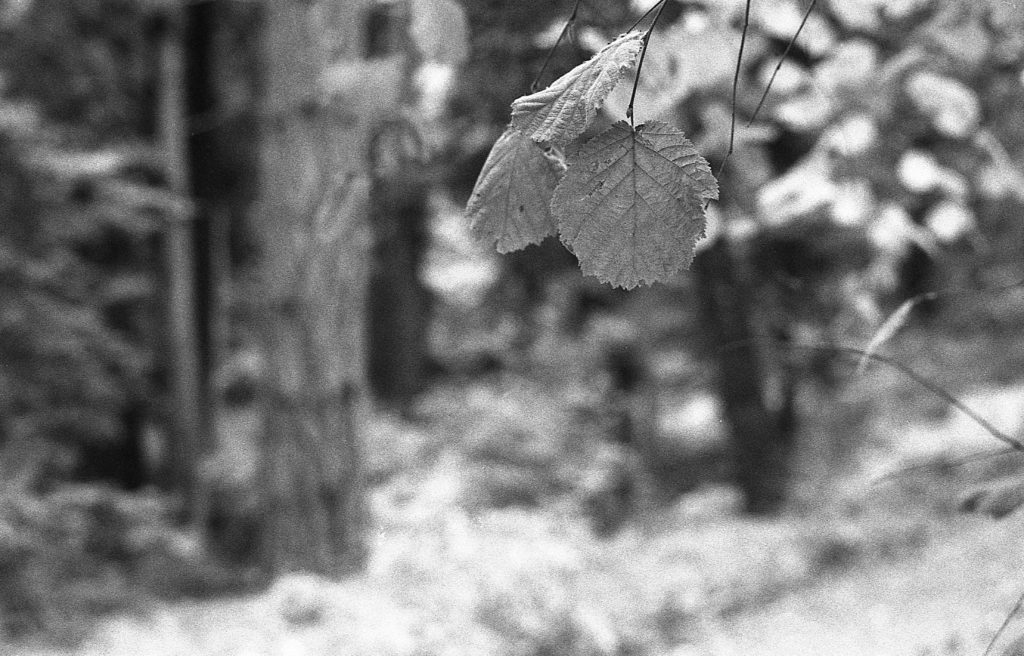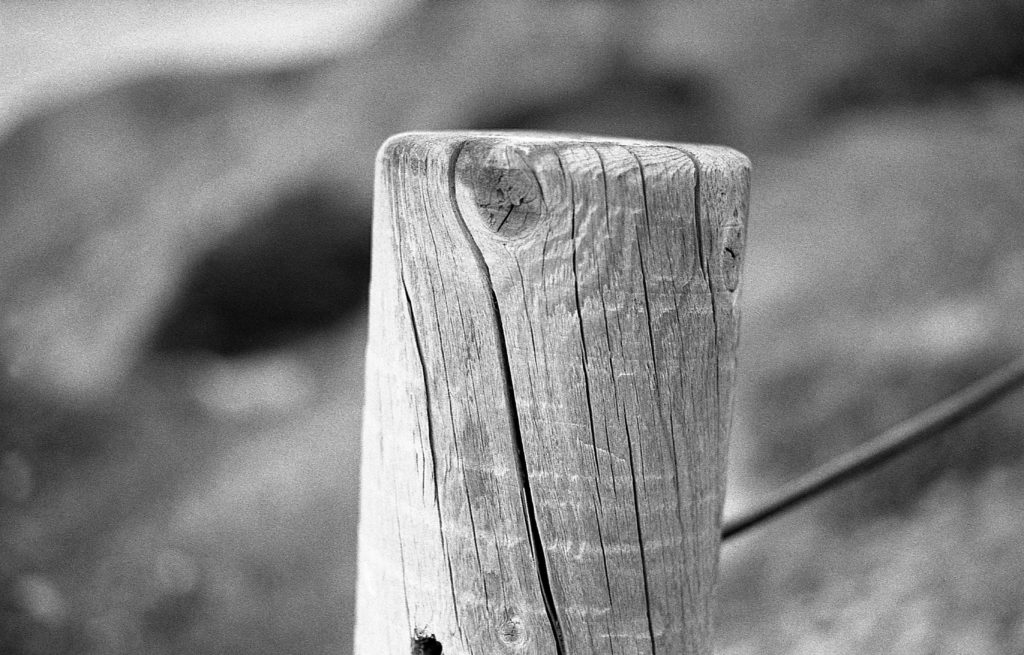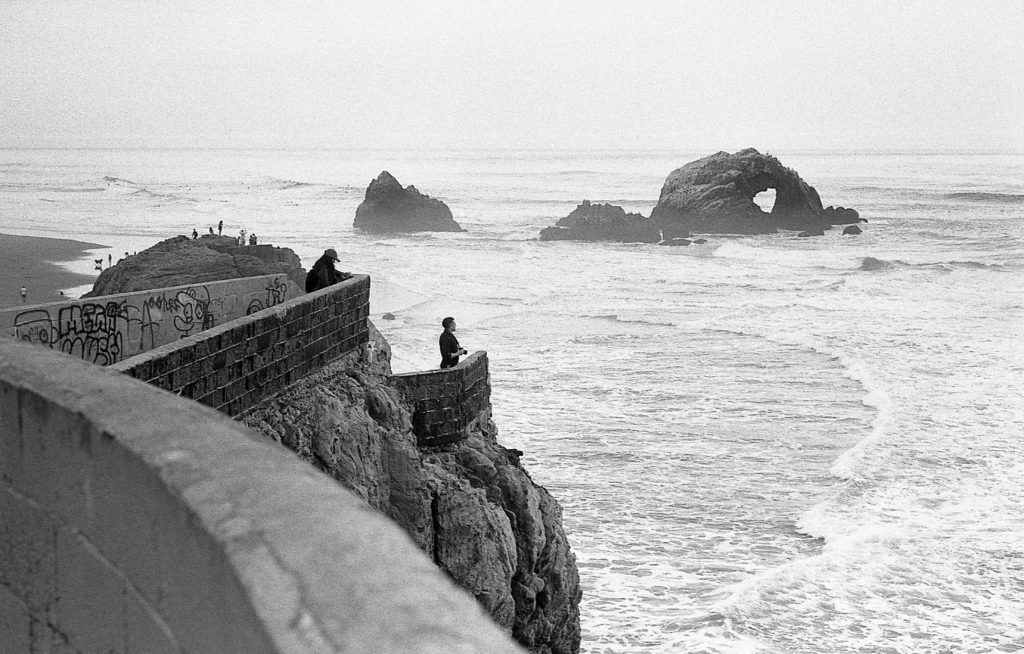I’m experimenting with different ways of developing film, e.g. stand development. This weekend I developed black and white film using beer. The mix I used was from Peta Pixel and is called beeronol.
The ingredients for the beeronol I made are:
- 50cl of Guinness stout,
- 12g of Vitamin C crushed into powder, and
- 50g of washing soda (I baked baking soda at 400F for one hour to turn it into washing soda).
Develop the film in this soup at 86F for 15 minutes. Agitate for the first 30 seconds and 5 seconds every minute until done. Stop & fix as you’d normally do.
I found the results to be interesting. The beer turned the grain in Ilford FP4+ ISO 125 into irregular shapes, and the grain was larger. Some frames became foggy. Many frames displayed some sort of bromide drag. Some frames were flat and others super contrasty.
In the example below you can see 8 bands of bromide drag.
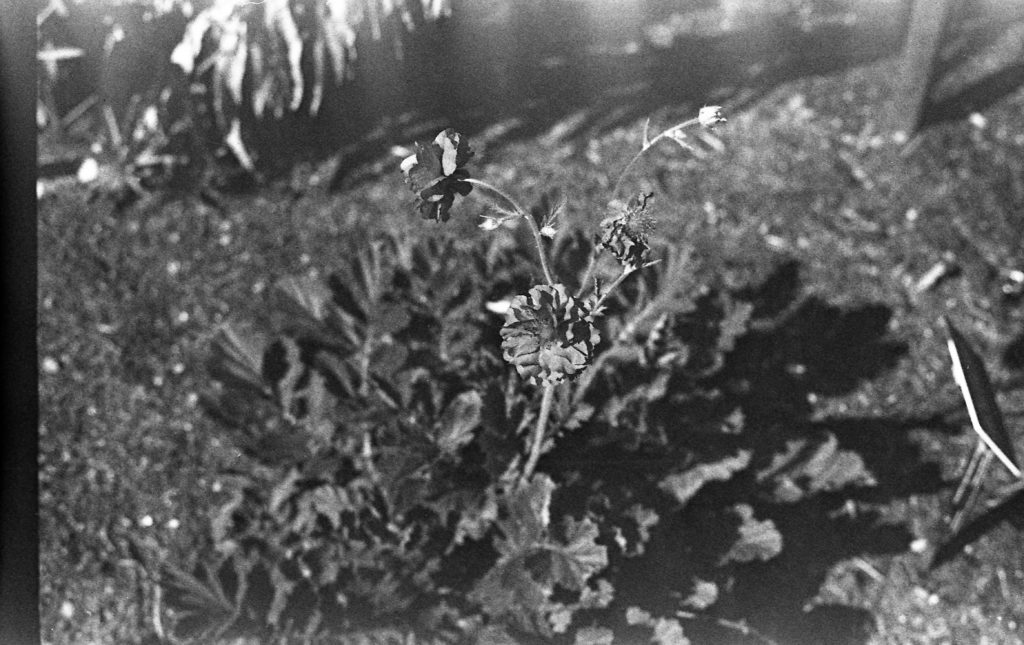
Here’s an example of fogging with bromide drag, too.
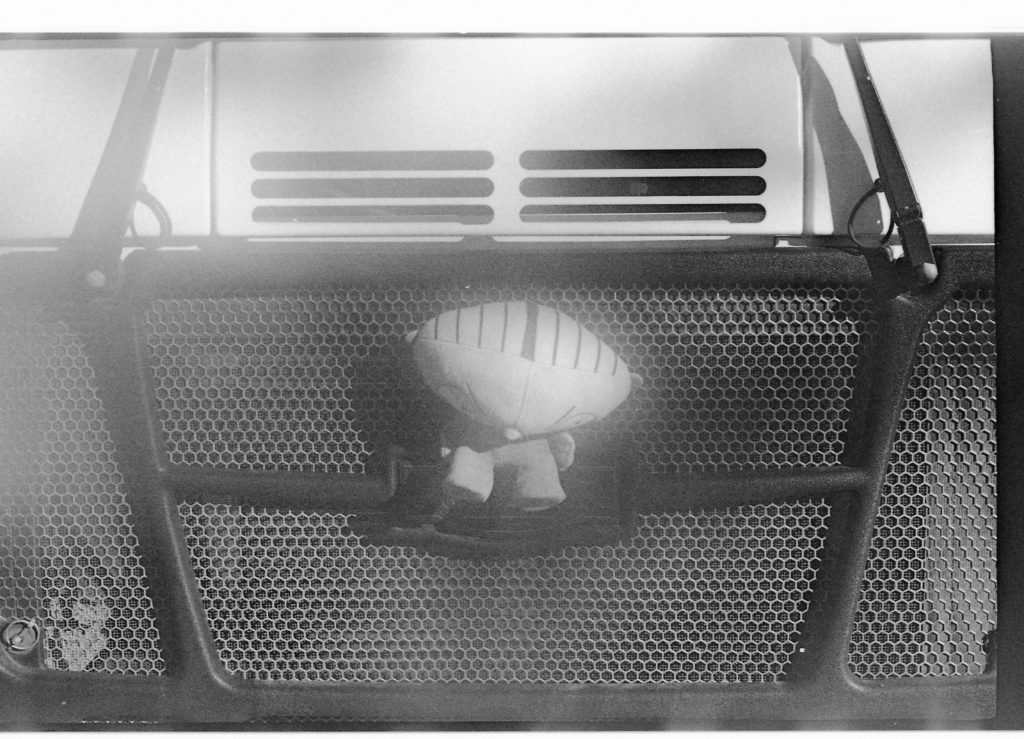
Here’s an example that came out okay. If you zoom in, the grains are highly irregular, large and spotty. I suspect this might have something to do with the beer bubbles. There’s bromide drag in the bottom left.
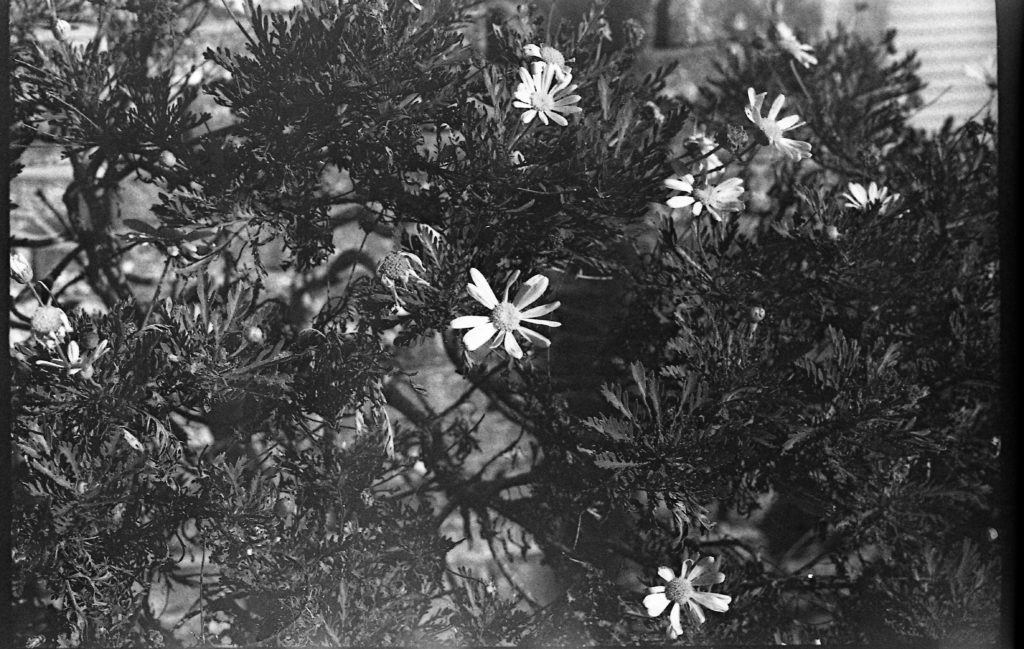
Beeronol is expensive to make. 2 bottles of Guinness Stout (25cl) is already $4 versus sixteen cents ($0.16) per teaspoon of Rodinal per roll of film. If I wanted to make a photo look like it was from long ago, the irregularities with bromide drag, fog, and graininess make this a good choice.
